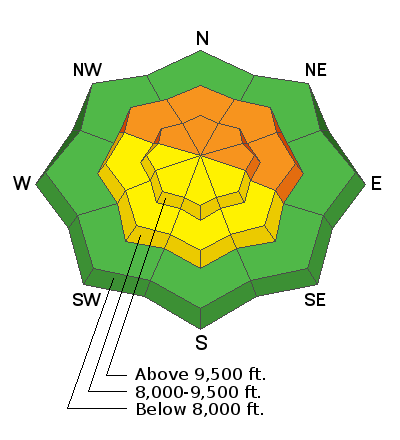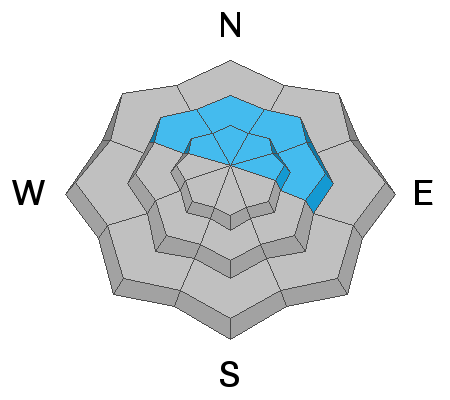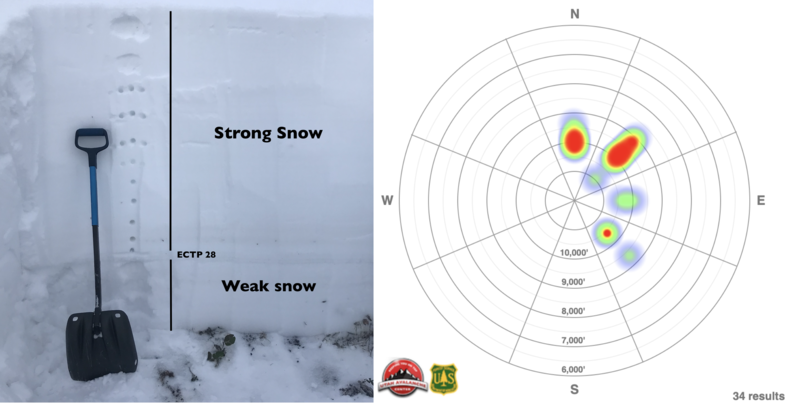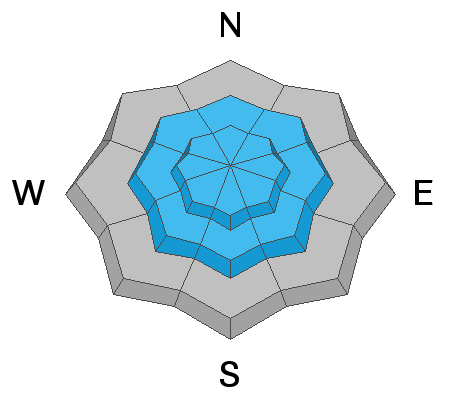Persistent Weak Layer discussion: Yesterday, while investigating the recent avalanche accident along the Park City ridgeline we traveled along the ridge to the top of the slope. Standing there, we looked at the last six turns a 45 year old snowboarder made and stood in silence.
After a couple of minutes four avalanche professionals debated if we should descend the slope to take a look at the avalanche and investigate the crown and layering of the slide. With some discussion we all determined the upper 1/4 was low enough angle (30°) to safely descend. However, the slope midway down pitched to 33° degrees in steepness and we all felt very uncomfortable with the danger of triggering a slide there. Collectively, we decided it was too unsafe to descend the slope to look at the avalanche. We walked back to the resort safely along the ridgeline and descended a southerly aspect to the flats below. Now in the run-out zone we also determined it was too risky to enter from below because of the overhead hanging snow and the possibility of triggering another avalanche remotely (from a distance).
Now is the time to exercise patience in the mountains and let these weak layers gain strength and heal. I get it - the snow looks amazing on steep northerly facing aspects, the desire to ride these lines is pulling me in. However, I am just fine looking at it and saying "soon enough." The risk does not equal the reward in my book.
Yes, the slab is strong and travel is now easy. Nevertheless, the weak layer is still down there and it remains weak. The likelihood of triggering an avalanche is decreasing, signs of instability like collapsing and remote triggers are becoming less and less, but the consequence of triggering an avalanche remains the same. Avalanche activity is slowing down, however, there still remains the chance of finding the sweet spot on the slope that brings millions of pounds of snow down the mountain. Remember tracks are not a sign of stability.
What will it take for me to trust this weak layer?
- More time
- No more avalanches failing into the weak faceted snow. (it's only been 24 hrs since the last reported human triggered slide).
- Extended column tests recording no propagation (not just one! many need to be done).
- Another loading event where avalanches don't fail on this weak layer.
The good news: We have a phenomenal snowpack for December 17th and we have perfect powder on so many aspects and elevations. The low angle terrain is fast and surfy. The weak snow at the ground will eventually heal with time. With some patience we will be able to safely get after the steep terrain in time to come.











